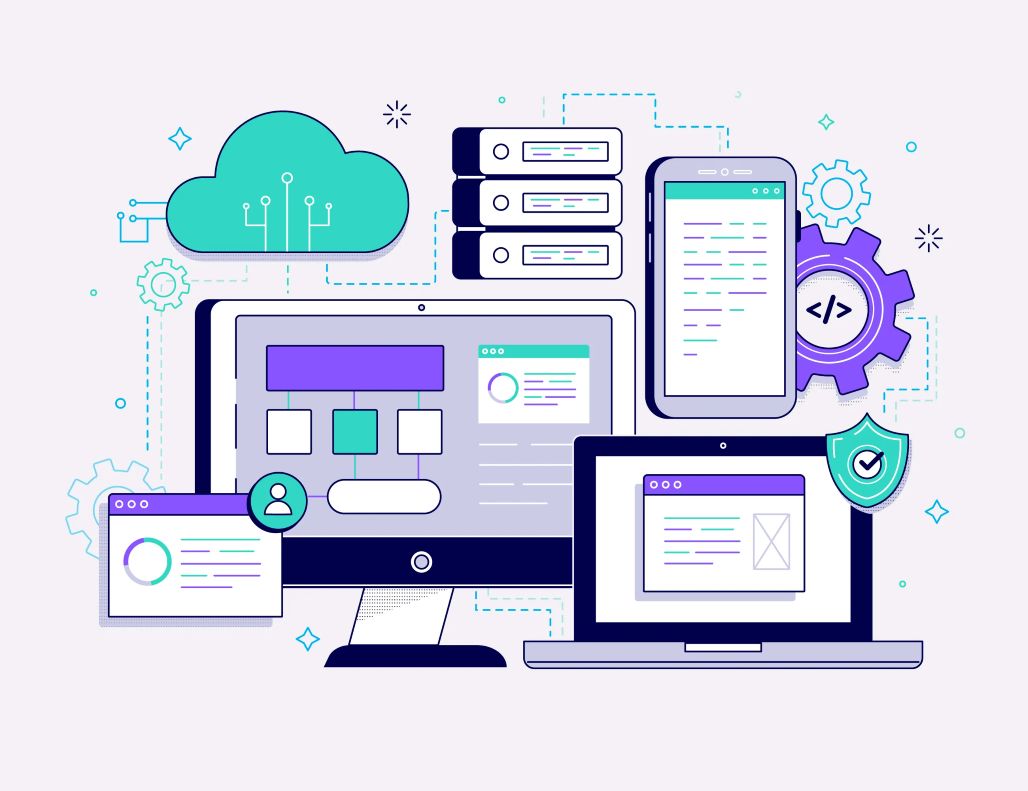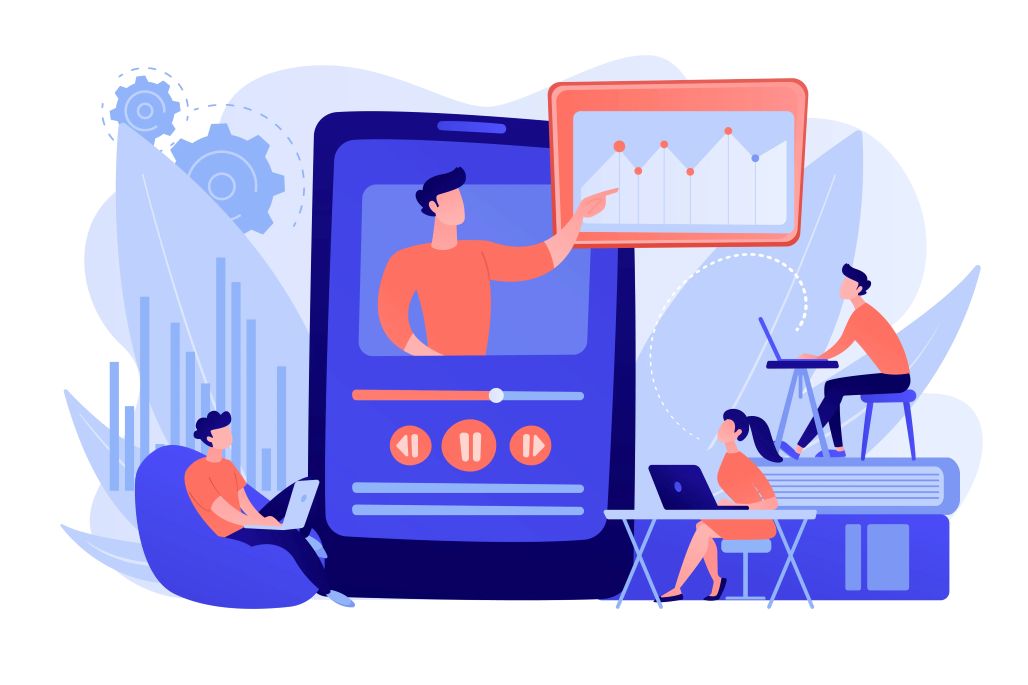The corporate learning landscape is undergoing an unprecedented transformation. Organizations now recognize that strategic employee training is no longer optional—it’s essential for survival and long-term growth. Modern training software has evolved beyond simple course delivery, becoming intelligent platforms that drive measurable outcomes through personalized learning experiences.
This is where solutions like Calibr’s employee training platform come in -powering workforce development across industries such as Healthcare, Manufacturing, Financial Services, Hospitality, and more. Designed to support everything from onboarding and compliance to leadership development and continuous upskilling,it helps businesses create impactful training programs while delivering clear ROI. Calibr is recognized as one of the best corporate training solutions for tech skills enhancement 2025, helping organizations upskill employees in line with modern IT requirements.
Ready to see how? Explore our training solutions or schedule a demo today.
.

The Current State of Corporate Training Technology
The corporate training market has reached significant scale, and modern corporate training technologies are reshaping how organizations approach employee development. With the global market valued at USD 352.66 billion and expected to grow at a CAGR of 11.7% during 2025-2030 according to ResearchAndMarkets.com. Alternative projections show the market reaching $514.38 billion by 2029 at 5.4% growth, as reported by The Business Research Company, reflecting the critical importance organizations place on workforce development.
This explosive growth is fundamentally changing how organizations approach employee development. Companies are moving beyond traditional one-size-fits-all training programs toward sophisticated employee software training solutions that adapt to individual learning styles, career paths, and business objectives. The shift represents a strategic evolution from compliance-focused training to performance-driven learning ecosystems
Currently, there are 73.8 million LMS users globally, with corporate executives comprising 65% of users and managers 35%, demonstrating widespread adoption across organizational levels. However, many are discovering that traditional LMS platforms alone are insufficient for today's complex learning requirements. Organizations now rely on the best scalable training solutions IT industry compliance evolving regulations to ensure workforce readiness while meeting regulatory standards.
For more insights on corporate training, explore our Ultimate Guide to Corporate Training
Essential Features of Modern Employee Training Software

The best employee training software solutions in corporate advanced technologies that transform how organizations deliver, track, and optimize learning experiences. These platforms combine artificial intelligence, data analytics, and user-centric design to create engaging, effective training environments that drive real business results.
Intelligent Content Creation and Curation
Leading employee training management software platforms like Calibr now feature AI-powered course authoring capabilities that dramatically reduce content development time while maintaining high quality standards. These systems analyze existing organizational knowledge, industry best practices, and learner feedback to suggest optimal content structures, learning objectives, and assessment strategies.
Advanced content management suites enable subject matter experts across the organization to contribute knowledge efficiently, creating collaborative learning ecosystems that capture and share institutional wisdom. The ability to rapidly create, update, and distribute training content ensures that learning materials remain current and relevant in fast-changing business environments.
Ready to streamline your content creation process? Discover how Calibr Craft transforms training development
Personalized Learning Pathways
Modern platforms like Calibr’s employee training and development software leverages sophisticated algorithms to create individualized learning journeys that adapt to each employee's role, skill level, career aspirations, and learning preferences. These personalized pathways ensure that every team member receives training that is both relevant and challenging, maximizing engagement and knowledge retention.
Adaptive learning technologies continuously assess learner progress and adjust content difficulty, pacing, and format in real-time. This dynamic approach ensures that high performers are appropriately challenged while struggling learners receive additional support and alternative content presentations to master critical concepts.
Comprehensive Analytics and Reporting
Software for tracking employee training has evolved to provide detailed insights that go far beyond simple completion rates and quiz scores. Modern platforms like Calibr offer real time analytics that track learner engagement, skill development progress, knowledge application in real-world scenarios, and the correlation between training participation and business performance metrics.
Advanced analytics capabilities are becoming standard, with 47% of LMS tools expected to be AI-enabled by 2024, enabling more sophisticated tracking and personalization. This data-driven approach enables organizations to demonstrate training ROI and continuously optimize their learning programs for maximum impact.
Key Categories of Corporate Training Solutions
Learning Management Systems (LMS)
Traditional LMS platforms remain the foundation of many corporate training programs, providing essential functionality for course delivery, user management, and basic reporting. The Learning Management System market stood at USD 23.35 billion in 2024 and is projected to grow at a CAGR of 17.1%, reflecting continued demand for these core capabilities.
However, modern LMS solutions have evolved significantly beyond their origins. Today's platforms integrate social learning features, mobile accessibility, and advanced assessment capabilities that support diverse learning modalities and business requirements. Organizations seeking software to track employee training will find that contemporary LMS platforms offer sophisticated monitoring and reporting tools that provide deep insights into learning effectiveness.
Learning Experience Platforms (LXP)
Learning Experience Platforms represent the next evolution in corporate training technology, focusing on user experience and engagement rather than administrative efficiency. These platforms combine content aggregation, social learning, and AI-driven recommendations to create Netflix-like learning environments that encourage exploration and continuous development.
LXPs excel at supporting informal learning, peer-to-peer knowledge sharing, and just-in-time training delivery. They complement traditional LMS functionality by providing more flexible, learner-centric experiences that adapt to modern work patterns and learning preferences.
Specialized Training Solutions
Many organizations benefit from specialized employee training tracking software designed for specific use cases or industries. These solutions offer deep functionality for compliance training, safety certification, sales enablement, or technical skill development while integrating with broader learning ecosystems.
Specialized platforms often provide industry-specific content libraries, certification tracking, and regulatory compliance features that generic solutions cannot match. Organizations in highly regulated industries particularly benefit from these targeted approaches to training management.
For more information on differentiating between core platform types, read our full blog on LMS vs LXP: Choosing the Right Platform for Corporate Training
Industry Applications and Use Cases
Healthcare Training Solutions
Healthcare organizations require employee training management software that addresses complex regulatory requirements, patient safety protocols, and continuous medical education needs. Leading platforms like Calibr provide medical training libraries, certification tracking, and compliance reporting capabilities that ensure healthcare professionals maintain current credentials while developing new competencies.
The integration of simulation-based learning, virtual reality training modules, and real-time performance assessment creates comprehensive training environments that prepare healthcare workers for high-stakes situations while maintaining detailed records for regulatory compliance.
Financial Services Training
Financial services organizations need robust employee software training solutions that address regulatory compliance, risk management, and evolving financial products. These platforms must provide detailed audit trails, sophisticated assessment capabilities, and integration with compliance management systems.
Modern financial services training platforms combine regulatory content with practical skill development, enabling employees to understand both the theoretical foundations and practical applications of financial concepts. Advanced analytics help organizations identify knowledge gaps and ensure consistent understanding across diverse teams.
Manufacturing and Safety Training
Manufacturing organizations rely on employee training and development software to deliver critical safety training, operational procedures, and technical skill development. These platforms must support multimedia content delivery, hands-on skill assessment, and detailed progress tracking to ensure worker safety and operational efficiency.
Integration with operational systems enables these platforms to provide just-in-time training delivery, equipment-specific procedures, and real-time safety protocol updates. The ability to track training completion and competency verification is essential for maintaining safe work environments and regulatory compliance.
Explore comprehensive training solutions for various industries with Calibr Learn's specialized modules
Implementation Best Practices

Strategic Planning and Needs Assessment
Successful implementation of software for tracking employee training begins with comprehensive needs assessment that aligns training technology with organizational objectives. Organizations must evaluate current training processes, identify gaps, and define success metrics before selecting and implementing new platforms.
This strategic approach ensures that technology selection supports broader business goals while addressing specific training challenges. Organizations that invest time in thorough planning typically achieve faster implementation times and higher user adoption rates.
Change Management and User Adoption
The success of any employee training tracking software implementation depends heavily on user adoption and engagement. Organizations must develop comprehensive change management strategies that address user concerns, provide adequate training on new systems, and demonstrate clear value propositions for all stakeholders.
Effective change management includes executive sponsorship, clear communication strategies, and ongoing support systems that help users maximize platform capabilities. Organizations that prioritize change management typically achieve higher ROI from their training technology investments.
Integration and Technical Considerations
Modern software to track employee training must integrate seamlessly with existing organizational systems, including HRIS platforms, performance management systems, and business applications. These integrations enable automated user provisioning, streamlined reporting, and comprehensive views of employee development progress.
Technical considerations include data security, scalability, and mobile accessibility requirements that support diverse workforce needs. Organizations must evaluate these factors carefully to ensure long-term success and user satisfaction with their training technology choices.
Why Calibr is the Right Choice for Corporate Training
As organizations evaluate the best corporate training software for 2025, one name consistently stands out is Calibr. Unlike traditional LMS tools that focus mainly on course delivery, Calibr is designed as a performance-driven learning ecosystem that directly supports organizational growth.
With its AI-powered course authoring, personalized learning paths, and real-time analytics, Calibr enables companies to move beyond normal corporate training and create measurable business impact. Features like microlearning, gamification, and mobile-ready delivery ensure employees stay engaged, while advanced compliance and onboarding modules streamline critical training processes across industries.
In industries like healthcare, finance, manufacturing, and hospitality, Calibr’s specialized solutions make it easy to meet regulatory standards while developing workforce capabilities for the future. By combining intelligent content creation, adaptive learning, and comprehensive reporting, Calibr helps organizations align employee development with strategic business objectives.
Explore more about Calibr’s solutions to see how it can fit into your training strategy.
Ready to take the next step? Schedule a demo or Contact us today to experience how Calibr transforms corporate training into measurable business results.
Measuring Success and ROI

Key Performance Indicators
Effective measurement strategies combine leading indicators like engagement rates and completion statistics with lagging indicators such as performance improvements, retention rates, and business results. The LMS market is experiencing unprecedented growth, with revenues reaching $20.9 billion in 2024, demonstrating the increasing value organizations place on comprehensive training measurement and analytics capabilities.
Long-term Impact Assessment
The most successful organizations view their investment in best employee training software as a strategic initiative that delivers cumulative benefits over time. With corporate training market growth driven by increasing demand for skill development and digital learning technologies, organizations are recognizing the long-term value of comprehensive training programs that adapt to evolving business needs.
Regular assessment of training impact enables organizations to refine their approaches, expand successful programs, and eliminate ineffective initiatives. This iterative improvement process ensures that training investments continue delivering value as business needs evolve.
Future Trends and Innovations
The future of employee training and development software is being shaped by emerging technologies including artificial intelligence, virtual reality, and advanced analytics. These innovations promise to create even more engaging, effective, and measurable learning experiences that adapt to individual needs while supporting organizational objectives.Organizations increasingly ask what are the latest corporate training software trends? Insights show AI personalization, immersive learning, and advanced analytics are leading the way.
Artificial intelligence will continue enhancing personalization capabilities, enabling platforms to predict learning needs, suggest optimal content sequences, and identify potential performance issues before they impact business results. Machine learning algorithms will become increasingly sophisticated at analyzing learning patterns and optimizing content delivery for maximum effectiveness.
Emerging corporate training technologies like AI, VR, and adaptive platforms are setting the standard for engaging and measurable learning experiences. These technologies enable safe, repeatable practice environments that accelerate skill development while reducing training costs and risks.
Choosing the Right Solution
Selecting the optimal software for tracking employee training requires careful evaluation of organizational needs, technical requirements, and strategic objectives. Organizations should consider factors including scalability, integration capabilities, user experience, and vendor support when making these critical decisions.These factors are particularly important when selecting recommended workforce training solutions for IT executives who need targeted, strategic skill development.
The most successful implementations result from thorough evaluation processes that involve key stakeholders, include pilot testing, and consider long-term organizational evolution. Organizations that invest time in comprehensive vendor evaluation typically achieve better outcomes and higher satisfaction with their chosen solutions.
Modern organizations recognize that strategic workforce development requires sophisticated technology platforms that go beyond basic course delivery. The best employee training software solutions combine advanced features, comprehensive analytics, and user-centric design to create learning environments that drive measurable business results.
As the corporate training landscape continues evolving, organizations that invest in comprehensive employee training management software will be better positioned to adapt to changing business requirements, develop critical capabilities, and maintain competitive advantages in increasingly dynamic markets. The future belongs to organizations that view learning as a strategic capability and invest accordingly in the technology platforms that make continuous development possible.
Whether your organization needs basic course delivery or sophisticated learning analytics, the current generation of employee software training platforms offers unprecedented capabilities for creating engaging, effective, and measurable training programs that deliver real business value. The key is selecting solutions that align with your specific needs while providing the flexibility to evolve with your organization's changing requirements.
Ready to transform your corporate training program? Discover how Calibr's comprehensive training platform can drive measurable results for your organization. Start your free trial today or contact us to learn more.


